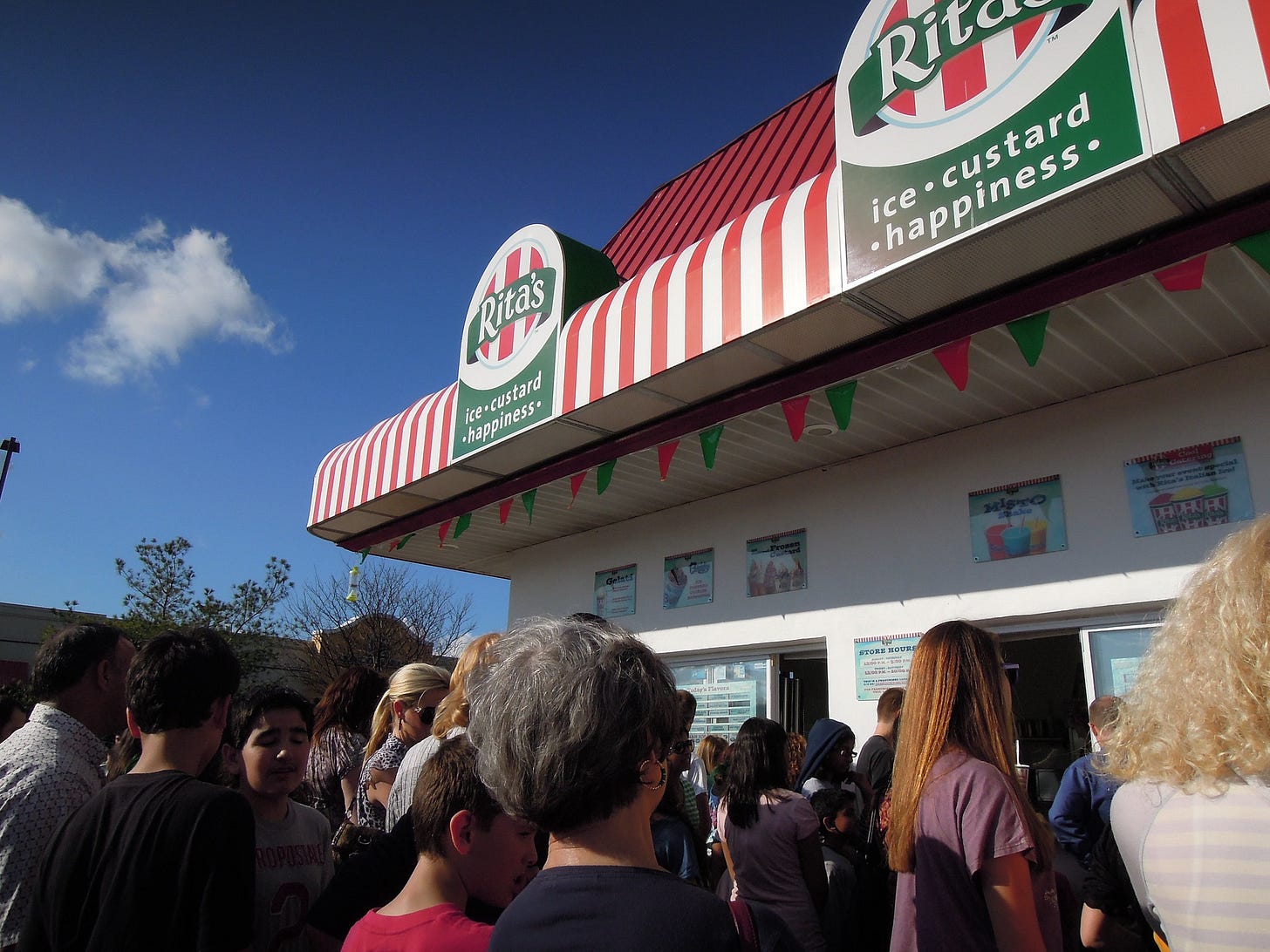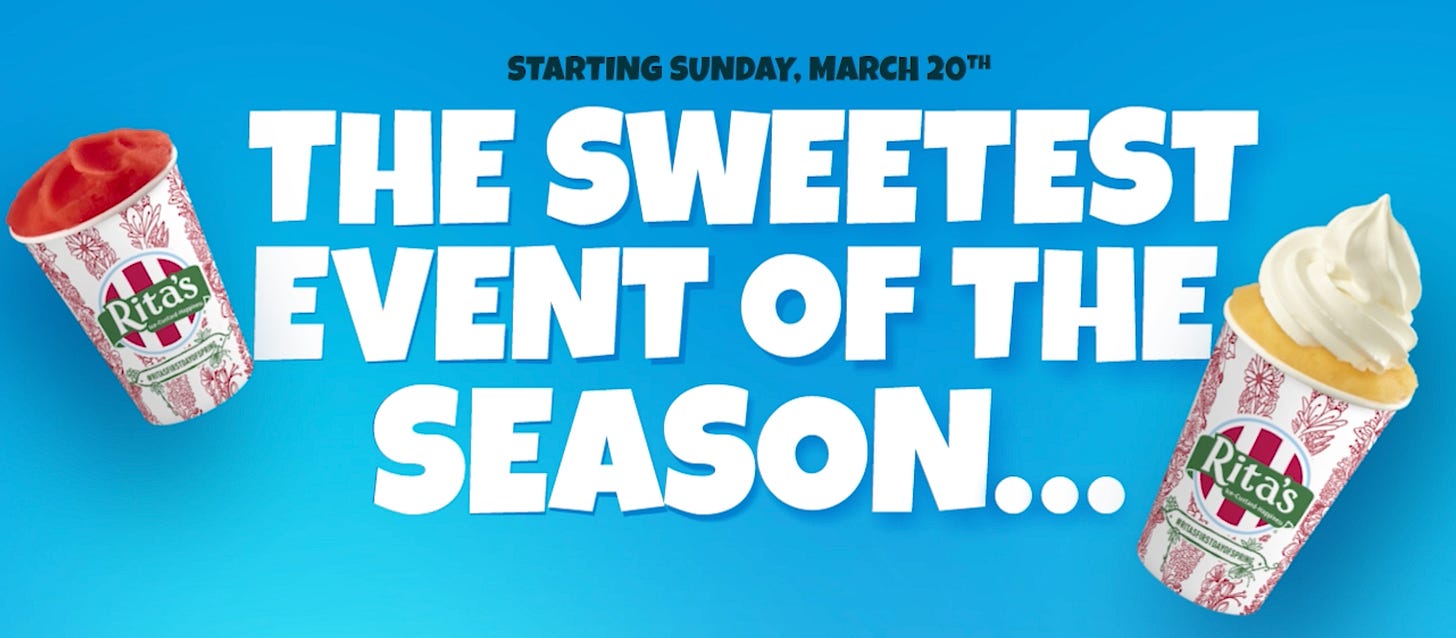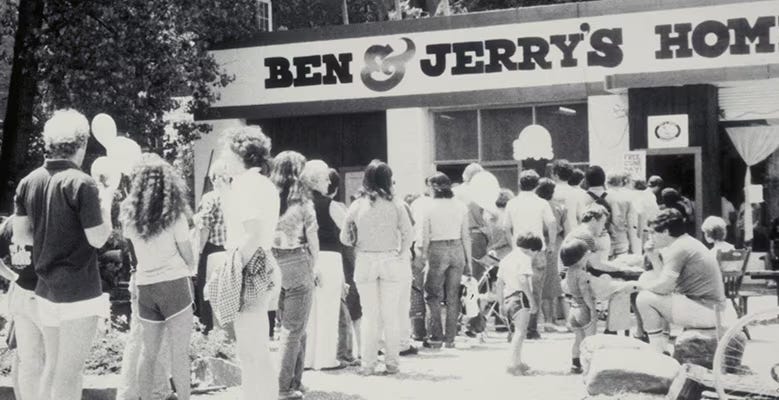There's No Such Thing as a Free Italian Ice
You’re reading Monday Morning Economist, a free weekly newsletter that explores the economics behind pop culture and current events. Each issue reaches thousands of readers who want to understand the world a little differently. If you enjoy this post, you can support the newsletter by sharing it or by becoming a paid subscriber to help it grow:

The first day of Spring often signals two common rituals. Not only is it time to start cleaning out the closets, but it also means that many Americans will line up at their neighborhood Rita’s (or Dairy Queen) to form a line down the block. I drove past our local store around dinnertime and saw at least 30 people bundled up and waiting patiently for their complimentary scoop of frozen sugar water.
Two things immediately stood out. The first was the number of people standing outside in 45-degree weather for a frozen treat, and the second was that they were standing in the cold for something that usually costs only a few dollars.
I considered stopping to ask why they were doing it. But then I remembered: I’m an economist. I already know the answer. Or at least, I know the more interesting question. What’s the real cost of “free”?

The Economics Behind Waiting in Line
There’s a concept that economists love to talk about. We bring it up at dinner parties (which is why we don’t get invited to many), and we teach it in every intro course during the first week of every semester.
It’s called opportunity cost.
The general idea is that the cost of doing anything (including waiting in line for “free” Italian ice) is what you give up by doing it. Time, attention, energy. Every choice comes at the expense of another.
So when I see 30 people standing in line for a $4 treat, I don’t see a bunch of people who have found a good deal. I see a lot of people trading 30, maybe 45 minutes of their lives for a small cup of flavored ice. And that tradeoff probably doesn’t feel like a loss. That is, until it’s too late.
This isn’t about guilt or shame. It’s just about being honest about tradeoffs, even when there’s no cash involved.

"Free" Isn’t Free
Rita’s isn’t the only company to market this deal. Every spring, Dairy Queen gives away free cones. A few weeks later, Ben & Jerry’s holds their famous “Free Cone Day.” Parents will flock to restaurants offering “Kids Eat Free” nights. And if you’re ever in central Pennsylvania, you can swing by Knoebels, “America’s Largest Free-Admission Amusement Park.” (Spoiler: you’ll still spend money.)
These promotions aren’t scams, they’re marketing. And they work because they feel generous.
But whether it’s the cost of gas, parking, standing in line, or ordering a bunch of stuff to qualify for the freebie, there’s always a tradeoff. If you’re skipping your workout, your homework, or an hour of relaxation, that’s the real price you’re paying.
Even boring routines have hidden costs. Can’t find time to read? Always feel like you’re behind on laundry or emails? Maybe it’s time to take a closer look at how you’re spending your 24 hours.
Or maybe you’re like Ben Stiller in Along Came Polly, wondering if fluffing and de-fluffing decorative pillows is really worth it.
Final Thoughts
If people understand that time is valuable, why do they wait in line for “free” stuff?
I have a few theories. Maybe they don’t understand the concept of opportunity cost. It’s possible they don’t think their next-best option has much value. Or maybe, they’re just undervaluing their time.
We tend to notice time waste after it happens. Waiting in line feels harmless in the moment. What’s a few more minutes? We round the cost down to zero. Until 30 minutes have gone by, and we’re cold, and we still haven’t gotten our cone.
But here’s the optimistic take: just thinking about opportunity cost makes you more intentional. It helps you spend your time like it’s the most valuable thing you have, because, well, it is.
So if you’ve made it this far, thanks for reading. You could’ve been doing anything else, but you chose this. I hope that means you got your money’s worth.
Forward this to your friend who doesn’t seem to have a problem waiting in line for half an hour for a “free” ice cream cone. We love them, but they need to learn about opportunity cost.
There are 191 Rita’s Italian Ice locations in Pennsylvania, the most of any other state [ScrapeHero]
Rita’s offers 95 different flavors of Italian ice, but they rotate each day [Rita’s]
Dairy Queen soft serve has 5% butterfat, but the FDA regulations require “ice cream” to have a minimum of 10% butterfat [Forbes]
About 6.4 billion pounds of ice cream and frozen yogurt were produced in the U.S. in 2019 [International Dairy Food Association]
There are 525,600 minutes in a year [Rent]



